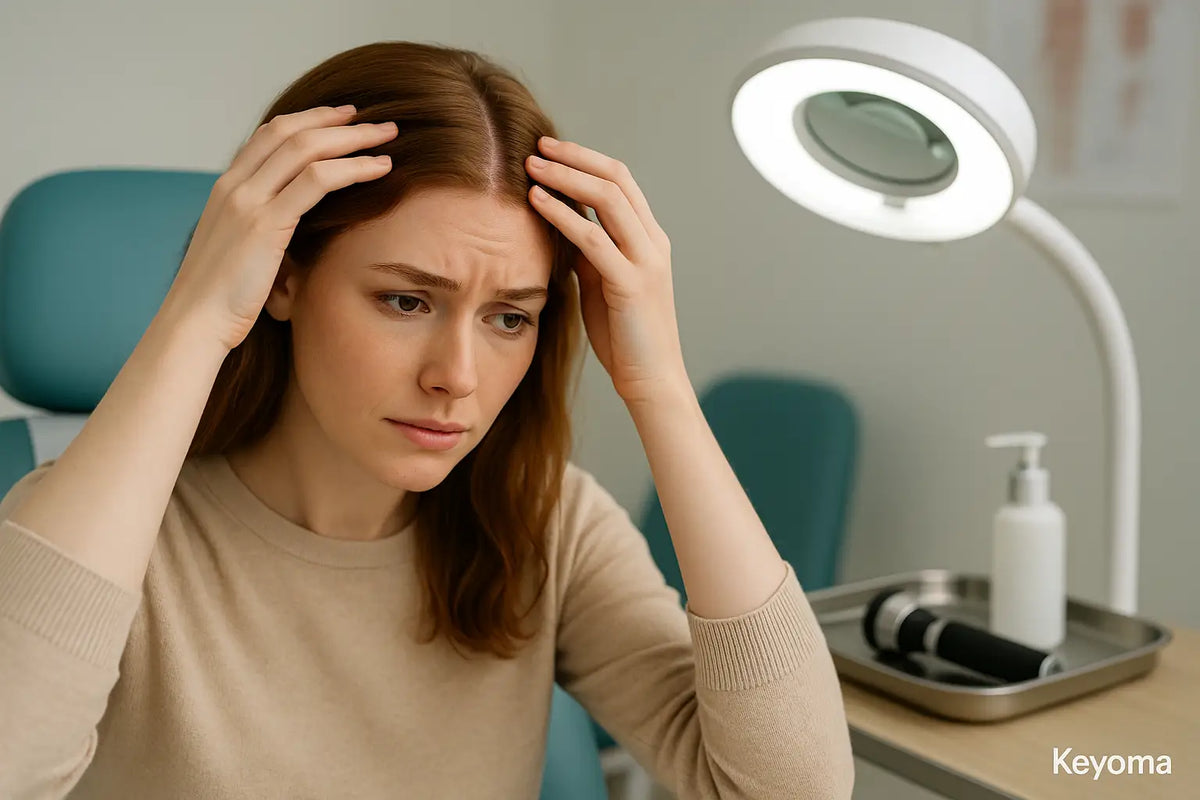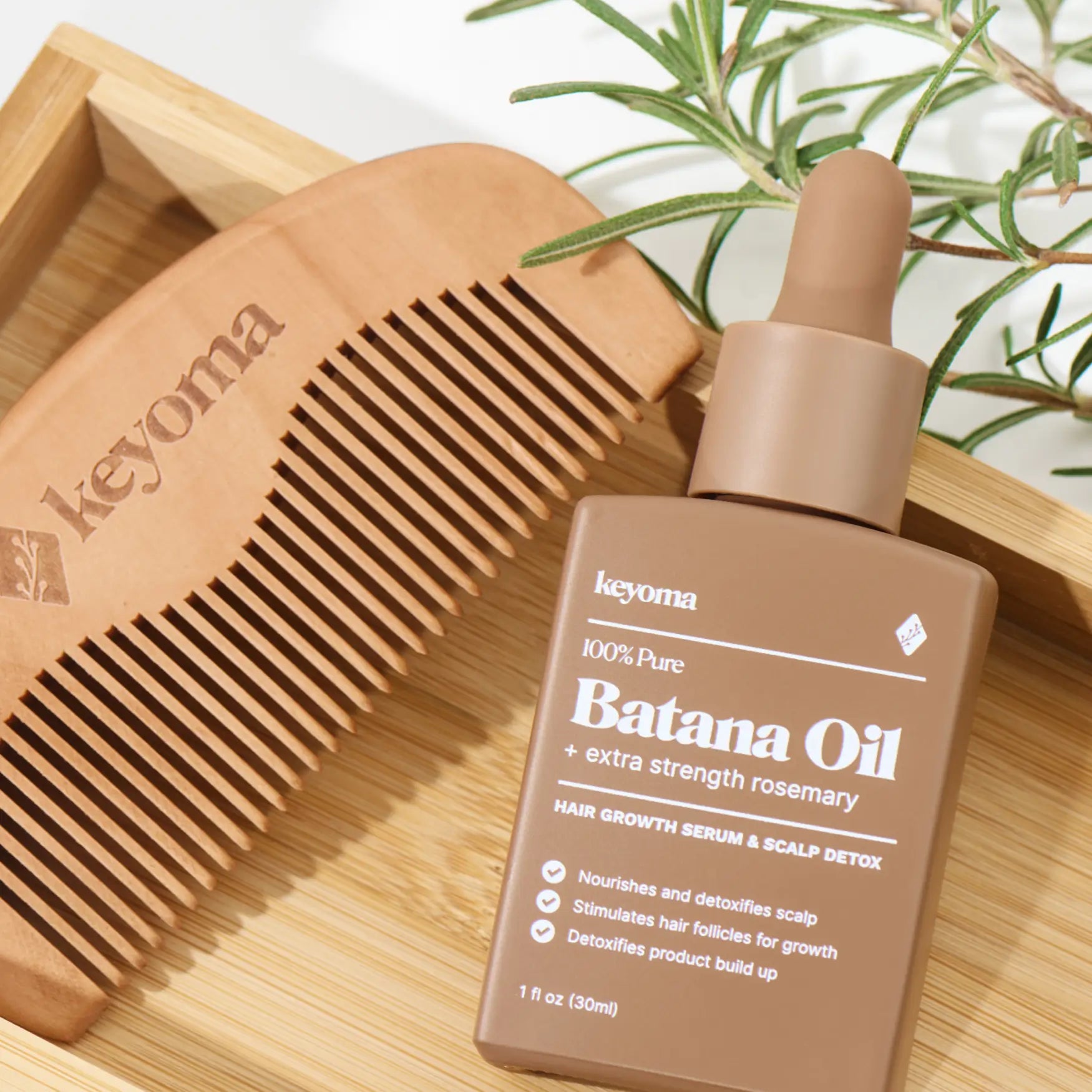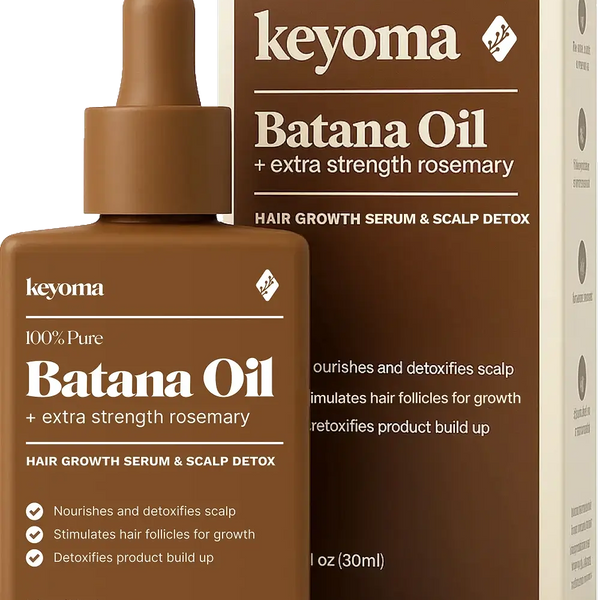In this article
If your scalp itches, burns, or feels sore, you might be dealing with scalp folliculitis. This condition is common and treatable, so you can get relief once you know the cause.
Folliculitis and similar issues can also lead to shedding. With a correct diagnosis from a qualified hair loss professional who identifies the trigger, you can address the inflammation and improve related hair loss.
Key Takeaways
-
Scalp inflammation describes symptoms from many conditions rather than a single disease.
-
Common causes include dermatitis, infections, psoriasis, parasites, and contact reactions.
-
Treatments range from gentle home care to medicated shampoos and prescription drugs.
-
See a clinician if symptoms persist, worsen, or include pain, swelling, or scarring.
What Is Scalp Inflammation?
Scalp inflammation is simply inflammation affecting the skin on the top, sides, or back of your head.
There is no single diagnosis called scalp inflammation. Several conditions can irritate the scalp and cause swelling or discomfort.
Inflammation is your body’s defense response to injury, infection, or stress. It helps control threats and supports healing afterward.
Two forms are typical:
-
Acute inflammation is short term and often helpful. Think of swelling after a sprain.
-
Chronic inflammation is low grade and ongoing. It can be harder to notice and may contribute to hair loss over time.
Common Causes of Scalp Inflammation
If you’re wondering why your scalp feels inflamed, several factors may be involved. Many people experience at least one of the causes below.

Seborrheic Dermatitis
Seborrheic dermatitis is a common skin condition that can cause a red, scaly rash on your scalp. The area can look greasy with white or yellow scale.
Itching is frequent. When you scratch, dry skin can flake from the scalp and show up as ongoing dandruff.
Folliculitis
Folliculitis is an infection that develops in hair follicles. Small sores form on the scalp, often like acne bumps. They may crust and take longer to heal.
This condition usually is not very painful, yet it can itch or feel uncomfortable. It is common on the scalp and can also occur on other parts of the body.
Scalp Ringworm (Tinea Capitis)
Scalp ringworm is a fungal infection that can develop in your scalp and hair follicles. The same groups of fungi can infect the feet, torso, and other areas.
Typical signs include a red, itchy rash with a scaly feel. Another clue is a black dot scalp symptom.
Psoriasis
Psoriasis is an immune-driven skin disorder that causes thick, scaly plaques. It happens when the skin makes new cells faster than usual.
Psoriasis can affect any skin surface, including the scalp. Common scalp symptoms include redness, itching, silvery-white scale, and very dry skin that can crack and bleed.
Head Lice and Insect Bites
Head lice or insect bites can trigger intense itching that leads to inflammation and temporary hair loss. The scalp reacts to the irritant, which may damage nearby follicles.
Allergies to Hair Products or Styling Techniques
Allergic reactions to certain products or styling methods can cause contact dermatitis. That irritation inflames the scalp and can contribute to shedding.
Some products can also build up on the scalp and clog follicles. Wash thoroughly after use and watch how your scalp responds when you try something new.
Yeast, Fungi, and Bacteria
Microorganisms grow in moist conditions and can cause infections that inflame the scalp. Leaving hair damp or sweaty for long periods increases the risk.
Good hygiene and complete drying reduce problems. Wash regularly and dry your scalp well to help prevent infection-driven irritation.
Treatment for Scalp Inflammation and Hair Loss
Now that you know common causes, here are potential itchy scalp treatments you can explore to calm symptoms and protect hair.

Home Remedies
Simple home care can ease irritation in mild cases. These options are not cures, yet they may improve comfort and support scalp health.
Start with gentle massage to boost local blood flow. Try these scalp massage techniques to promote relaxation and support growth.
A warm compress can also reduce discomfort. Many people find aloe vera, coconut oil, or diluted apple cider vinegar helps calm irritation.
Natural Oils
Natural oils can soothe an irritated scalp by sealing moisture, softening buildup, and delivering fatty acids and antioxidants that support the skin barrier. Batana oil contains oleic and linoleic acids that may ease dryness and redness.
Argan oil provides vitamin E, squalene, and phytosterols that can reduce itch and improve comfort. Jojoba oil resembles natural sebum and may help rebalance an oily, irritated scalp.
Patch-test any essential oil blends, skip oils on broken skin, and see a clinician if symptoms continue.
Topical Medications
Medicated shampoos and prescription creams can reduce inflammation and treat underlying causes. Your provider may choose formulas for dermatitis, psoriasis, bacteria, or fungi.
Oral Medications
For more severe or persistent conditions, you may need oral antibiotics or antifungal medicines after evaluation. A healthcare professional can tailor treatment to your diagnosis.
Care For Your Scalp Now to Protect Hair
Use moisture timing as your early warning. When water or sweat lingers on your scalp, microbes thrive and irritation can follow, so dry the roots fully after workouts and before sleep using a cool setting.
If your scalp stays damp after a shower or workout, then dry it completely on cool air, switch to a gentle wash, avoid applying products until the skin is calm, and reintroduce only one product at a time.
For step-by-step checklists and product-testing guides, visit the Keyoma Hair Care blog.
Featured Product
100% Pure Batana Oil + Rosemary









